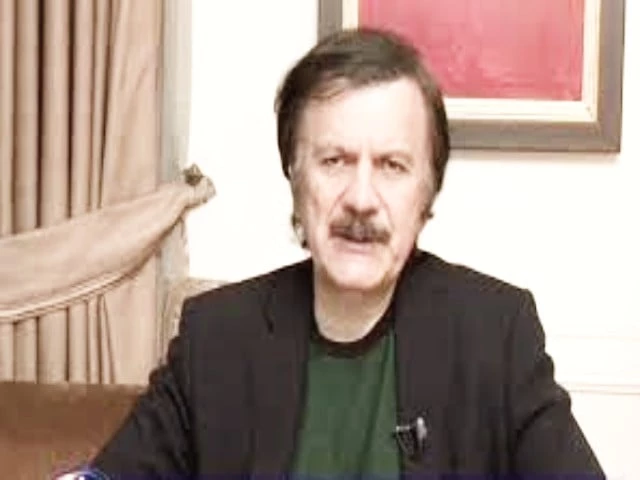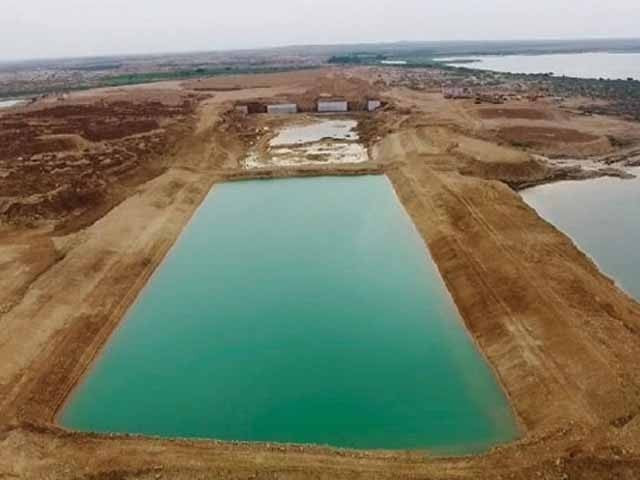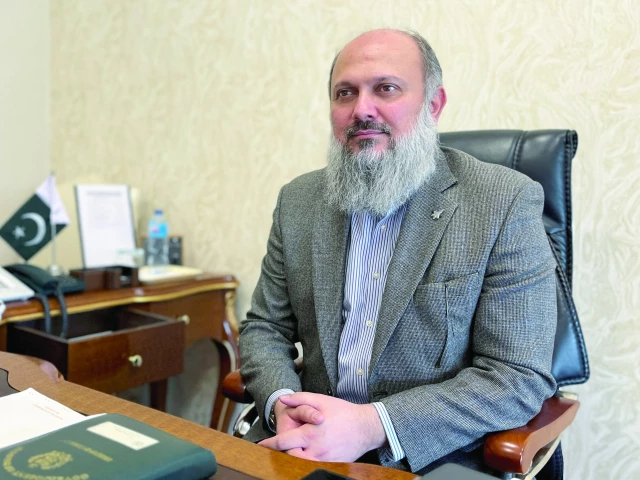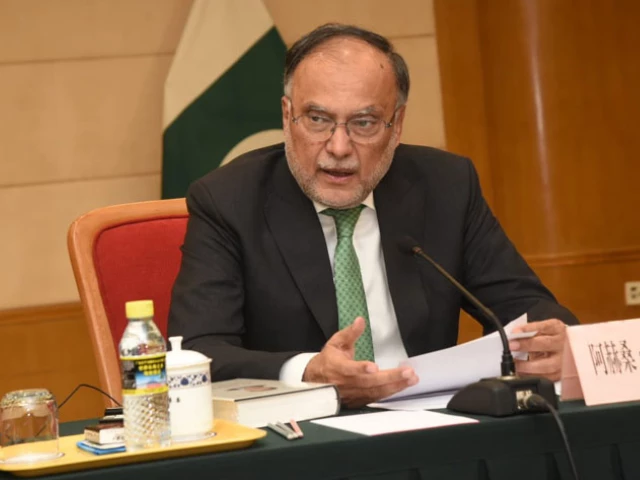Business
The global wealthy are lining up for Trump’s $1 million Gold Card after price cut

U.S. President Donald Trump signs an executive order in the Oval Office at the White House on September 19, 2025 in Washington, DC. Trump signed two executive orders, establishing the “Trump Gold Card” and introducing a $100,000 fee for H-1B visas.
Andrew Harnik | Getty Images News | Getty Images
A version of this article first appeared in CNBC’s Inside Wealth newsletter with Robert Frank, a weekly guide to the high-net-worth investor and consumer. Sign up to receive future editions, straight to your inbox.
By slashing the price of the Gold Card from $5 million to $1 million, President Donald Trump has created one of the most coveted deals in the global visa market, with demand already surging among the world’s wealthy, according to immigration attorneys.
Last week, Trump signed an executive order announcing the official launch of the Gold Card, which will cost $1 million and grant residency in “record time,” he said. When he first announced the Gold Card in February, the price was $5 million. While the Gold Card website also touts a future $5 million Platinum Card, with added tax benefits, the Platinum Card wasn’t in the executive order and wasn’t mentioned in the press event.
With its new discounted price and promise of speedy approvals, the Gold Card has instantly become one of the most sought after “golden visas” in the world, with a price below many other countries. Singapore’s investment visa program, for instance, costs nearly $8 million, while New Zealand’s new program is just under $3 million. Even Samoa is more expensive, requiring a $1.4 million investment.
“The Gold Card is almost too cheap,” said Reaz Jafri of international law firm Withers. “You get access to the U.S. education system, health-care system, banking system and financial markets, all for $1 million. It’s a pittance for many of these families. I think they should have kept it at $5 million to make it special.”
The global wealthy are ready to write the checks. Jafri said he was speaking at a family office conference in Singapore this week and was approached by three families — two based in China and one based in India — who immediately expressed interest in buying a Gold Card. He said he expects his firm alone will help process “hundreds” of applications once the program is off the ground and proven.
Commerce Secretary Howard Lutnick said the government plans to issue 80,000 Gold Cards. Together with potential Platinum Card and the new H-1B fees, which were raised to $100,000, he said the programs are expected to raise $100 billion in federal revenue.
The Gold Card still faces obstacles. Despite the announcement at the White House last Friday, there is no way to apply for the visa yet. The website announcing the Gold Card that went live in June asks for basic information from potential applicants, including their name and country of residence. So far, people who registered on the site said they haven’t received any updates.
The program is also likely to be challenged in the courts and potentially by Congress. Because immigration law is set by Congress, the president created the Gold Card through several legal workarounds, including using the existing EB-1 and EB-2 programs as the infrastructure or basis for the Gold Card. The $1 million fee is officially labeled an “unrestricted gift” to the government rather than an official fee change.
The tentative legal status may also give the overseas wealthy pause at first, according to immigration attorneys. Many applicants will likely wait to see the first Gold Cards awarded and granted before spending the $1 million. And some may wait even longer.
“These things always take a little bit of time to ramp up,” said Dominic Volek group head of private clients at Henley & Partners. “People don’t want to be the first one to try it. The majority of our clients like to see the program up and running for three to six months and see the outcomes before they commit.”
Volek said he’s already had a number of inquiries from clients and expects the program to attract at least 5,000 to 10,000 applications a year.
“From a price point perspective, it’s definitely more attractive at $1 million instead of $5 million,” Volek said. “And if it’s as quick as they say, it becomes even more attractive.”
The Gold Card also comes at an opportune moment in the global visa market. As geopolitical uncertainty, wars and political tensions rise across the world, the ultra-wealthy are buying alternative citizenships and residencies for a “Plan B” or hedge against their home countries.
An estimated 142,000 millionaires are expected to relocate to another country in 2025, according to a report from New World Wealth and Henley & Partners. The U.S. is one of the top destinations, with 7,500 millionaires expected to move to the U.S. this year, ranking only second to the United Arab Emirates, according to the report. Most of the millionaires coming to America are from Asia, the U.K. and Latin America.
Demand for the Gold Card is likely to come mainly from China and India, according to immigration advisors. Yet applicants from those countries may be disappointed. The EB-1 and EB-2 programs (which form the basis for the Gold Card) already have large backlogs of applicants from China and India, stretching for years. If Gold Card buyers are allowed to skip to the front of the line because of their $1 million donation, the applicants who have been waiting could file lawsuits. At the same time, Gold Card buyers won’t be willing to spend $1 million if they’re forced to wait years for approval.
Dramatically expanding the number of visas available through the EB-1 and EB-2 programs would also likely require approval from Congress, advisors said.
“India and China are actually excluded in a way from the Gold Card,” Volek said. “The EB-1 and EB-2 routes already have significant backlogs for China and India. So immediate access to the Gold Card may not actually work if you’re born in one of those two countries.”
The Gold Card also has some downsides compared with other golden visa programs around the world. The $1 million donation isn’t refundable, while visas in other countries are structured as investments that could generate returns. And unlike most other countries, the U.S. taxes its citizens and residents on their worldwide income, even if it’s earned overseas.
The Platinum Card is designed to partially avoid the taxation issue in exchange for a higher price. According to the White House, the Platinum Card would allow holders to remain in the U.S. for 270 days a year without paying taxes on their overseas income. Currently, overseas nationals are subject to worldwide tax if they are in the U.S. for 183 days during a three-year period using a complex IRS day-counting formula known as the “substantial presence” test.
Some advisors say the Platinum Card will be a tougher sell than the Gold Card, since it doesn’t lead to a green card or citizenship and has limited benefits for the ultra-rich who already spend time in the U.S.
“It will not sell well,” said David Lesperance, of Lesperance Associates. “Few will consider it worth $5 million just to spend an additional 91 days in the U.S.”
Others say the Gold and Platinum cards will appeal to different types of overseas rich. The Platinum Card may be appealing to the ultra-wealthy — say, billionaires from Asia or the Middle East — who want to be in the U.S. but want to shield their companies and income from U.S. taxes. Jafri said he’s already received inquiries about the Platinum Card from four Brazilian family offices.
The Gold Card is more fitting for the sons and daughters of the overseas rich who want to go to college in the U.S. and become more competitive in the U.S. job market after graduating.
“A lot of the kids of these overseas billionaires don’t want to run the family business and want to be architects or doctors or engineers and have regular jobs,” Jafri said. “Or maybe they want to create a startup in America. The Gold Card is very attractive for that group.”
Given the relatively low price of the Gold and Platinum cards, Jafri said the White House should consider eventually issuing a Black Card.
“They could charge $20 million or $25 million and exempt the buyers from the estate tax,” he said. “That would be a game changer. I bet 1,000 people would do it and they would bring all their assets to the U.S.”
Business
South Korea: Online retail giant Coupang hit by massive data leak

Osmond ChiaBusiness reporter
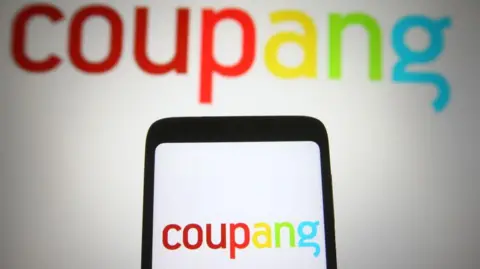 Getty Images
Getty ImagesSouth Korea’s largest online retailer, Coupang, has apologised for a massive data breach potentially involving nearly 34 million local customer accounts.
The country’s internet authority said that it is investigating the breach and that details from the millions of accounts have likely been exposed.
Coupang is often described as South Korea’s equivalent of Amazon.com. The breach marks the latest in a series of data leaks at major firms in the country, including its telecommunications giant, SK Telecom.
Coupang told the BBC it became aware of the unauthorised access of personal data of about 4,500 customer accounts on 18 November and immediately reported it to the authorities.
But later checks found that some 33.7 million customer accounts – all in South Korea – were likely exposed, said Coupang, adding that the breach is believed to have begun as early as June through a server based overseas.
The exposed data is limited to name, email address, phone number, shipping address and some order histories, Coupang said.
No credit card information or login credentials were leaked. Those details remain securely protected and no action is required from Coupang users at this point, the firm added.
The number of accounts affected by the incident represents more than half of South Korea’s roughly-52 million population.
Coupang, which is founded in South Korea and headquartered in the US, said recently that it had nearly 25 million active users.
Coupang apologised to its customers and warned them to stay alert to scams impersonating the company.
The firm did not give details on who is behind the breach.
South Korean media outlets reported on Sunday that a former Coupang employee from China was suspected of being behind the breach.
The authorities are assessing the scale of the breach as well as whether Coupang had broken any data protection safety rules, South Korea’s Ministry of Science and ICT said in a statement.
“As the breach involves the contact details and addresses of a large number of citizens, the Commission plans to conduct a swift investigation and impose strict sanctions if it finds a violation of the duty to implement safety measures under the Protection Act.”
The incident marks the latest in a series of breaches affecting major South Korean companies this year, despite the country’s reputation for stringent data privacy rules.
SK Telecom, South Korea’s largest mobile operator, was fined nearly $100m (£76m) over a data breach involving more than 20 million subscribers.
In September, Lotte Cards also said the data of nearly three million customers was leaked after a cyber-attack on the credit card firm.
Business
Pakistan’s crisis differs from world | The Express Tribune
1729471601-0/image-(8)1729471601-0-640x480.webp)
Multiple elite clusters capture system as each extracts benefits in different ways
Pakistan’s ruling elite reinforces a blind nationalism, promoting the belief that the country does not need to learn from developed or emerging economies, as this serves their interests. PHOTO: FILE
KARACHI:
Elite capture is hardly a unique Pakistani phenomenon. Across developing economies – from Latin America to Sub-Saharan Africa and parts of South Asia – political and economic systems are often influenced, shaped, or quietly commandeered by narrow interest groups.
However, the latest IMF analysis of Pakistan’s political economy highlights a deeper, more entrenched strain of elite capture; one that is broader in composition, more durable in structure, and more corrosive in its fiscal consequences than what is commonly observed elsewhere. This difference matters because it shapes why repeated reform cycles have failed, why tax bases remain narrow, and why the state repeatedly slips back into crisis despite bailouts, stabilisation efforts, and policy resets.
Globally, elite capture typically operates through predictable channels: regulatory manipulation, favourable credit allocation, public-sector appointments, or preferential access to state contracts. In most emerging economies, these practices tend to be dominated by one or two elite blocs; often oligarchic business families or entrenched political networks.
In contrast, Pakistan’s system is not captured by a single group but by multiple competing elite clusters – military, political dynasties, large landholders, protected industrial lobbies, and urban commercial networks; each extracting benefits in different forms. Instead of acting as a unified oligarchic class, these groups engage in a form of competitive extraction, amplifying inefficiencies and leaving the state structurally weak.
The IMF’s identification of this fragmentation is crucial. Unlike countries where the dominant elite at least maintains a degree of policy coherence, such as Vietnam’s party-led model or Turkiye’s centralised political-business nexus, Pakistan’s fragmentation results in incoherent, stop-start economic governance, with every reform initiative caught in the crossfire of competing privileges.
For example, tax exemptions continue to favour both agricultural landholders and protected sectors despite broad consensus on the inefficiencies they generate. Meanwhile, state-owned enterprises continue to drain the budget due to overlapping political and bureaucratic interests that resist restructuring. These dynamics create a fiscal environment where adjustment becomes politically costly and therefore systematically delayed.
Another distinguishing characteristic is the fiscal footprint of elite capture in Pakistan. While elite influence is global, its measurable impact on Pakistan’s budget is unusually pronounced. Regressive tax structures, preferential energy tariffs, subsidised credit lines for favoured industries, and the persistent shielding of large informal commercial segments combine to erode the state’s revenue base.
The result is dependency on external financing and an inability to build buffers. Where other developing economies have expanded domestic taxation after crises, like Indonesia after the Asian financial crisis, Pakistan’s tax-to-GDP ratio has stagnated or deteriorated, repeatedly offset by politically negotiated exemptions.
Moreover, unlike countries where elite capture operates primarily through economic levers, Pakistan’s structure is intensely politico-establishment in design. This tri-layer configuration creates an institutional rigidity that is difficult to unwind. The civil-military imbalance limits parliamentary oversight of fiscal decisions, political fragmentation obstructs legislative reform, and bureaucratic inertia prevents implementation, even when policies are designed effectively.
In many ways, Pakistan’s challenge is not just elite capture; it is elite entanglement, where power is diffused, yet collectively resistant to change. Given these distinctions, the solutions cannot simply mimic generic reform templates applied in other developing economies. Pakistan requires a sequenced, politically aware reform agenda that aligns incentives rather than assuming an unrealistic national consensus.
First, broadening the tax base must be anchored in institutional credibility rather than coercion. The state has historically attempted forced compliance but has not invested in digitalisation, transparent tax administration, and trusted grievance mechanisms. Countries like Rwanda and Georgia demonstrate that tax reforms succeed only when the system is depersonalised and automated. Pakistan’s current reforms must similarly prioritise structural modernisation over episodic revenue drives.
Second, rationalising subsidies and preferential tariffs requires a political bargain that recognises the diversity of elite interests. Phasing out energy subsidies for specific sectors should be accompanied by productivity-linked support, time-bound transition windows, and export-competitiveness incentives. This shifts the debate from entitlement to performance, making reform politically feasible.
Third, Pakistan must reduce its SOE burden through a dual-track programme: commercial restructuring where feasible and privatisation or liquidation where not. Many countries, including Brazil and Malaysia, have stabilised finances by ring-fencing SOE losses. Pakistan needs a professional, autonomous holding company structure like Singapore’s Temasek to depoliticise SOE governance.
Fourth, politico-establishment reform is essential but must be approached through institutional incentives rather than confrontation. The creation of unified economic decision-making forums with transparent minutes, parliamentary reporting, and performance audits can gradually rebalance power. The goal is not confrontation, but alignment of national economic priorities with institutional roles.
Finally, political stability is the foundational prerequisite. Long-term reform cannot coexist with cyclical political resets. Countries that broke elite capture, such as South Korea in the 1960s or Indonesia in the 2000s, did so through sustained, multi-year policy continuity.
What differentiates Pakistan is not the existence of elite capture but its multi-polar, deeply institutionalised, fiscally destructive form. Yet this does not make reform impossible. It simply means the solutions must reflect the structural specificity of Pakistan’s governance. Undoing entrenched capture requires neither revolutionary rhetoric nor unrealistic expectations but a deliberate recalibration of incentives, institutions, and political alignments. Only through such a pragmatic approach can Pakistan shift from chronic crisis management to genuine economic renewal.
The writer is a financial market enthusiast and is associated with Pakistan’s stocks, commodities and emerging technology
Business
India’s $5 Trillion Economy Push Explained: Why Modi Govt Wants To Merge 12 Banks Into 4 Mega ‘World-Class’ Lending Giants
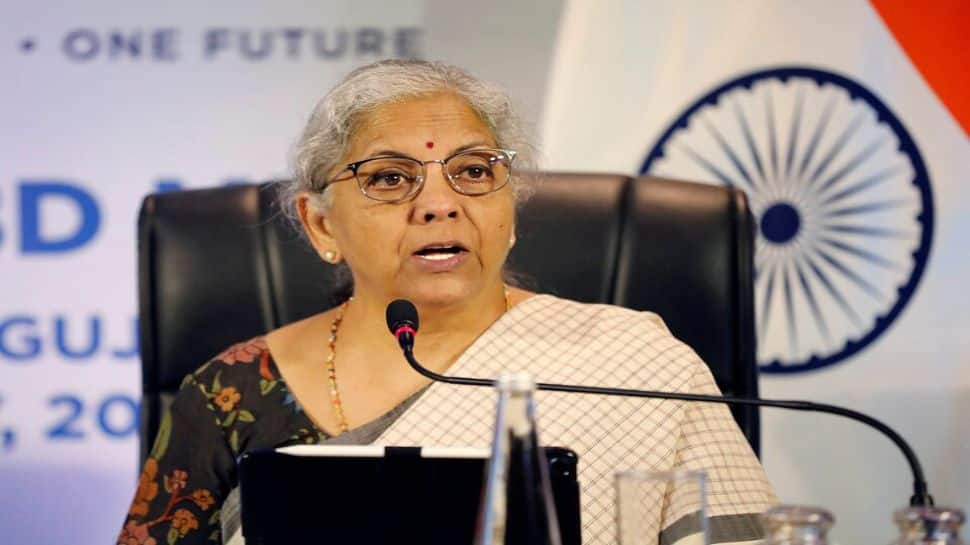
India’s Public Sector Banks Merger: The Centre is mulling over consolidating public-sector banks, and officials involved in the process say the long-term plan could eventually bring down the number of state-owned lenders from 12 to possibly just 4. The goal is to build a banking system that is large enough in scale, has deeper capital strength and is prepared to meet the credit needs of a fast-growing economy.
The minister explained that bigger banks are better equipped to support large-scale lending and long-term projects. “The country’s economy is moving rapidly toward the $5 trillion mark. The government is active in building bigger banks that can meet rising requirements,” she said.
Why India Wants Larger Banks
Sitharaman recently confirmed that the government and the Reserve Bank of India have already begun detailed conversations on another round of mergers. She said the focus is on creating “world-class” banks that can support India’s expanding industries, rising infrastructure investments and overall credit demand.
She clarified that this is not only about merging institutions. The government and RBI are working on strengthening the entire banking ecosystem so that banks grow naturally and operate in a stable environment.
According to her, the core aim is to build stronger, more efficient and globally competitive banks that can help sustain India’s growth momentum.
At present, the country has a total of 12 public sector banks: the State Bank of India (SBI), the Punjab National Bank (PNB), the Bank of Baroda, the Canara Bank, the Union Bank of India, the Bank of India, the Indian Bank, the Central Bank of India, the Indian Overseas Bank (IOB) and the UCO Bank.
What Happens To Employees After Merger?
Whenever bank mergers are discussed, employees become anxious. A merger does not only combine balance sheets; it also brings together different work cultures, internal systems and employee expectations.
In the 1990s and early 2000s, several mergers caused discomfort among staff, including dissatisfaction over new roles, delayed promotions and uncertainty about reporting structures. Some officers who were promoted before mergers found their seniority diluted afterward, which created further frustration.
The finance minister addressed the concerns, saying that the government and the RBI are working together on the merger plan. She stressed that earlier rounds of consolidation had been successful. She added that the country now needs large, global-quality banks “where every customer issue can be resolved”. The focus, she said, is firmly on building world-class institutions.
‘No Layoffs, No Branch Closures’
She made one point unambiguous: no employee will lose their job due to the upcoming merger phase. She said that mergers are part of a natural process of strengthening banks, and this will not affect job security.
She also assured that no branches will be closed and no bank will be shut down as part of the consolidation exercise.
India last carried out a major consolidation drive in 2019-20, reducing the number of public-sector banks from 21 to 12. That round improved the financial health of many lenders.
With the government preparing for the next phase, the goal is clear. India wants large and reliable banks that can support a rapidly growing economy and meet the needs of a country expanding faster than ever.
-

 Sports7 days ago
Sports7 days agoWATCH: Ronaldo scores spectacular bicycle kick
-

 Entertainment7 days ago
Entertainment7 days agoWelcome to Derry’ episode 5 delivers shocking twist
-

 Politics7 days ago
Politics7 days agoWashington and Kyiv Stress Any Peace Deal Must Fully Respect Ukraine’s Sovereignty
-

 Business1 week ago
Business1 week agoKey economic data and trends that will shape Rachel Reeves’ Budget
-

 Tech5 days ago
Tech5 days agoWake Up—the Best Black Friday Mattress Sales Are Here
-

 Fashion7 days ago
Fashion7 days agoCanada’s Lululemon unveils team Canada kit for Milano Cortina 2026
-

 Tech5 days ago
Tech5 days agoThe Alienware Aurora Gaming Desktop Punches Above Its Weight
-

 Politics1 week ago
Politics1 week ago53,000 Sikhs vote in Ottawa Khalistan Referendum amid Carney-Modi trade talks scrutiny



